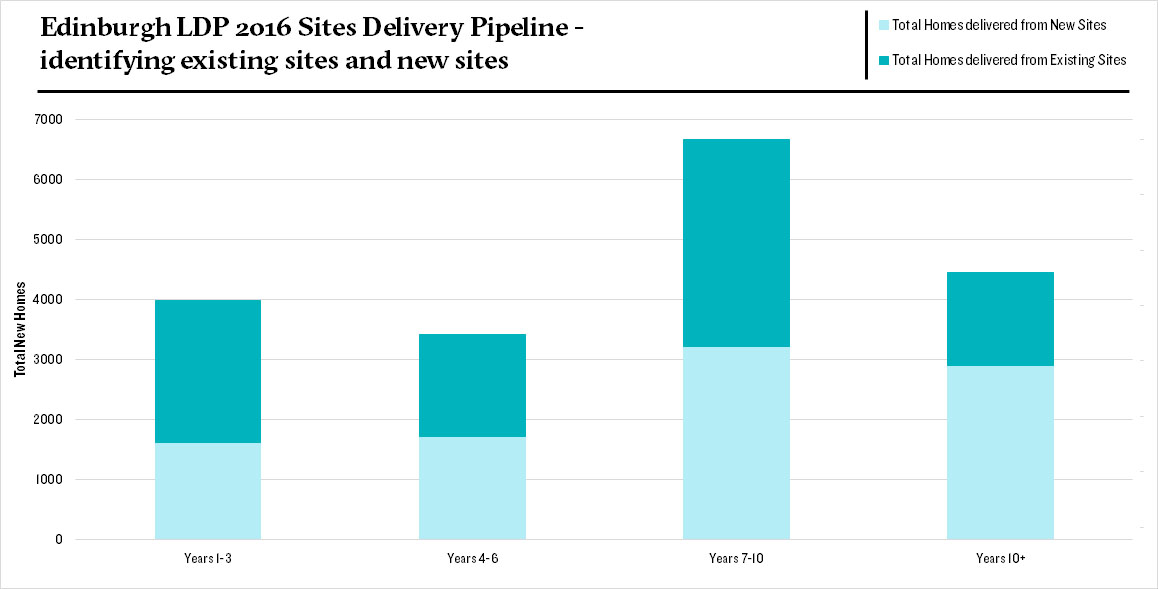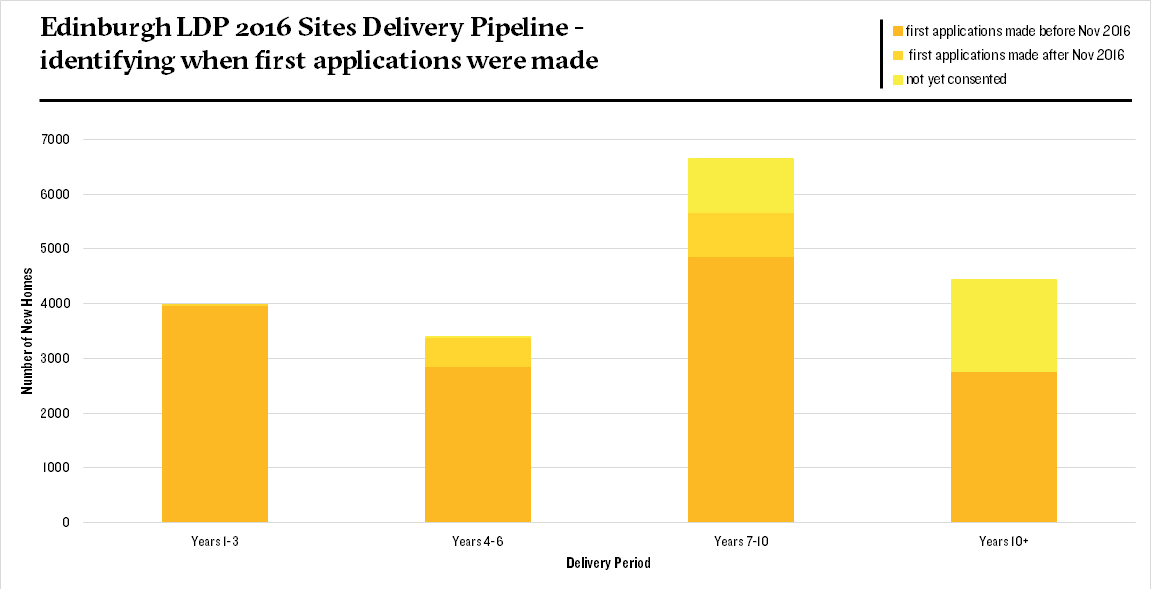The revised draft NPF4 was approved by the Scottish Parliament on 11 January 2022 and will be adopted and published on 13 February 2023.
Once adopted, NPF4 will form the national position for planning policies for decision-making and outline new processes for plan-making at a local level, becoming part of the statutory development plan for each planning authority in Scotland. NPF4 will replace Scottish Planning Policy (SPP) and the Strategic Development Plans (SDPs).
NPF4 removes the requirement to maintain a 5-year housing land supply and replaces this with an expectation that the LDP delivery programme will establish a deliverable housing land pipeline for the Local Housing Land Requirement. Phasing is expected to be identified for the short (1-3 years), medium (4-6 years) and long (7-10 years) term.
The purpose of the pipeline is to provide a transparent view of the phasing of housing allocations so that interventions, including infrastructure, which enable delivery can be planned.
NPF4 says the pipeline is to represent when land will be brought forward. We are all hoping this means when it will be delivered rather than when planning permission will be applied for but that isn’t clear. As Lichfields have explored before, there are significant lead in times for housing sites and it can be some years from an allocation, to an application, to a consent, to the delivery of new homes.
It should not be underestimated how long it takes to deliver new homes from new allocations
By way of illustration we have looked at Edinburgh’s housing pipeline based on the allocations in the 2016 LDP. If we assume 2017-18 is the first year of delivery after the LDP was adopted (November 2016) we are currently at the end of the medium term period.
A quick review of the latest Housing Land Audits shows us that there are a number of housing sites allocated in the 2016 LDP that haven’t yet been developed out and some of these sites were even carried forward from previous local plans. Looking at the 2016 allocations:
-
53 housing sites were identified
-
28 of these were existing proposals and 25 were new
-
24 sites identified in 2016 LDP are to be carried forward into the new LDP, 15 of the carried forward sites were existing sites in 2016
So, looking at how Edinburgh’s 2016 LDP allocations have delivered and are programmed to deliver we can see how this breaks down over the short, medium, long and 10 years plus timeframes:
-
22% of new homes in the short term
-
18% of new homes in the medium term
-
36% of new homes in the long term
-
24% of new homes beyond the 10-year period

A very large proportion of sites identified were already in the planning system before the LDP was adopted in November 2016
-
Short term sites - 99.6% of new homes - first application was made before the LDP was adopted
-
Medium term sites - 84% of new homes - first application was made before the LDP was adopted
-
Long term sites – 73% of new homes - first application was made before the LDP was adopted

All this tells us that lead in times are important in terms of the delivery pipeline and that a large proportion of delivery will be dependent on sites that that are in the planning system before the plan is adopted.
For Edinburgh more than 80% of homes delivered / programmed to be delivered in the 10-year period following the adoption of the 2016 LDP were in the planning system before the plan was adopted.
We haven’t yet looked to see if this is uniquely an Edinburgh problem, but it is something the industry needs to be alive to when assessing housing allocations and proposed delivery pipelines.
If NPF4 is to deliver the housing that Scotland needs, there will have to be a forensic understanding of the housing pipelines based on past experience as well as future ambitions.





